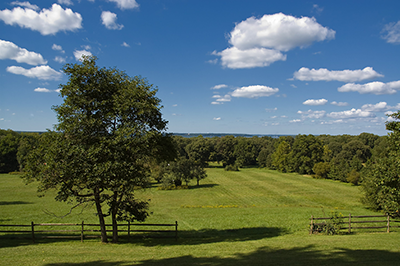
Contact: 301-743-7613
Charles County
Chapman State Park
3452 Ferry Place,
Indian Head, MD 20640
Hours: Sunrise to Sunset
Visitors to Chapman State Park enjoy a journey through time to Southern Maryland's pastoral heritage, finding mature forests, rare plants and bald eagles frequenting the skies above. Park visitors also discover the Mt. Aventine Mansion, the historic home of the prominent Chapman family, who were closely tied to the families of our Founding Fathers George Washington and George Mason. Standing in front of the Chapmans' grand estate, looking down the Potomac River and Virginia shoreline, is one of the most striking views in the region. Preserved in 1998 by the State of Maryland's Program Open Space (POS), Chapman State Park stretches from the Potomac River to Mattawoman Creek, in western Charles County. The park is a dramatic reminder of the great woodlands that once cradled the Potomac tidewater region.
Credits: Photographs by Danny Rothell of Rothell Enterprises